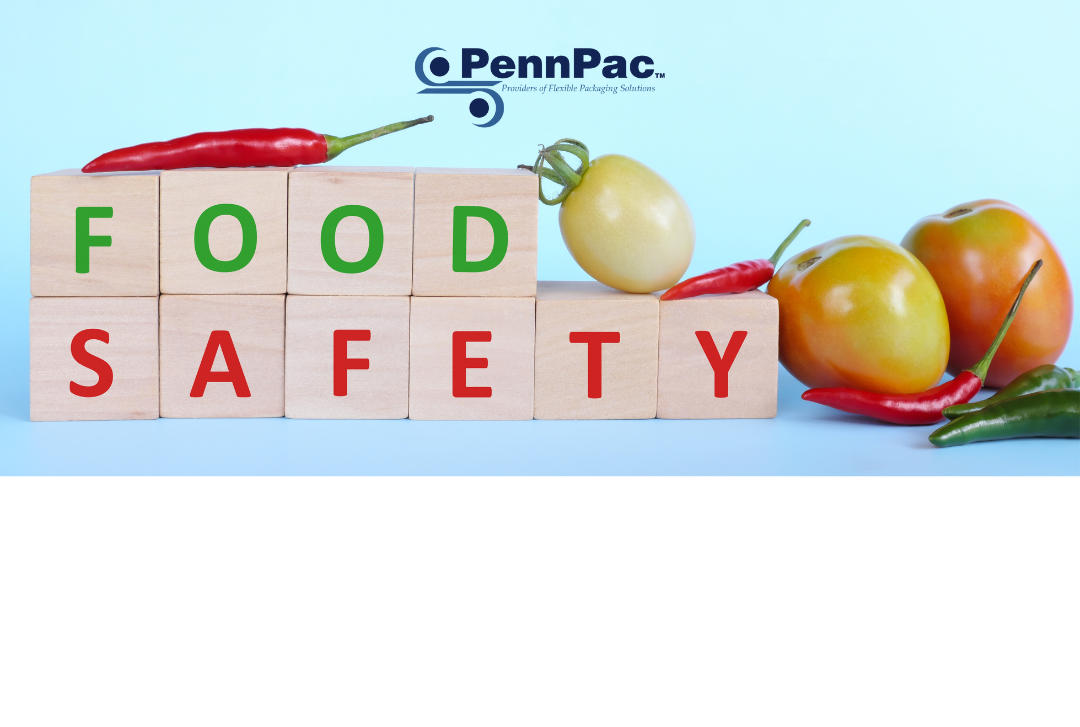
Meeting Demands in Food Safety
Food Safety packaging plays a crucial role in safeguarding the integrity and quality of food products. By employing barrier properties, microbial protection, and tamper resistance, effective food packaging helps prevent contamination, extends shelf life, and ensures consumer safety. Clear labeling and compliance with regulations provide consumers with essential information about ingredients, allergens, and expiration dates, enhancing transparency and trust. Increasingly, the focus is on sustainable materials to mitigate environmental impact. Through ongoing innovation, Food Safety packaging continues to evolve, adapting to emerging challenges and technologies to meet the demands of a global food market while prioritizing safety and sustainability.
Aspects of Food Safety in flexible packaging films.
- Barrier Properties: Packaging materials act as a barrier to oxygen, moisture, light, and other external factors that can degrade food quality and safety. This helps in preserving the freshness and nutritional value of the food.
- Microbial Protection: Packaging should prevent the growth of harmful microorganisms such as bacteria, molds, and yeasts that can cause food spoilage or foodborne illnesses.
- Physical Protection: Packaging should protect food products from physical damage during handling, transportation, and storage. This includes protection from impacts, compression, and temperature fluctuations.
- Chemical Safety: Packaging materials should not transfer harmful chemicals or substances to the food products. They should be free from toxic substances such as heavy metals, phthalates (PFA), and Bisphenol A (BPA).
- Tamper Resistance: Packaging should be designed to prevent tampering or contamination of the food products. Tamper-evident seals and closures provide assurance to consumers about the safety and integrity of the product.
- Information and Labeling: Packaging should provide clear and accurate information to consumers regarding the product’s ingredients, nutritional content, allergens, expiration date, storage instructions, and any relevant safety warnings.
- Regulatory Compliance: Food packaging materials and manufacturing processes must comply with local, state, and federal regulations and standards for food safety. Such as those set by the Food and Drug Administration (FDA) or the European Food Safety Authority (EFSA).
- Sustainability: Increasingly, there’s a focus on using sustainable and eco-friendly packaging materials that minimize environmental impact, such as biodegradable or recyclable materials, to address concerns about plastic pollution and waste generation.
Examples of food safety packaging materials include:
- Polyethylene (PE), Polypropylene (PP), Polyethylene terephthalate (PET), Nylon (PA), and more. Not to mention, multi-layered High Barrier Thermoforming Films.
Innovations in food safety packaging continue to evolve, driven by advancements in materials science and packaging technologies. Ultimately, aiming to further enhance food quality, safety, and sustainability.
CONTACT US TODAY
When your next flexible packaging film opportunity arises, consider PennPac for custom slit or toll slitting solutions. From wide-web to narrow-web and small-run production, PennPac will develop a custom solution to meet your requirements. More so, with the QUALITY AND RELIABILITY you’d expect from your packaging films partner.
